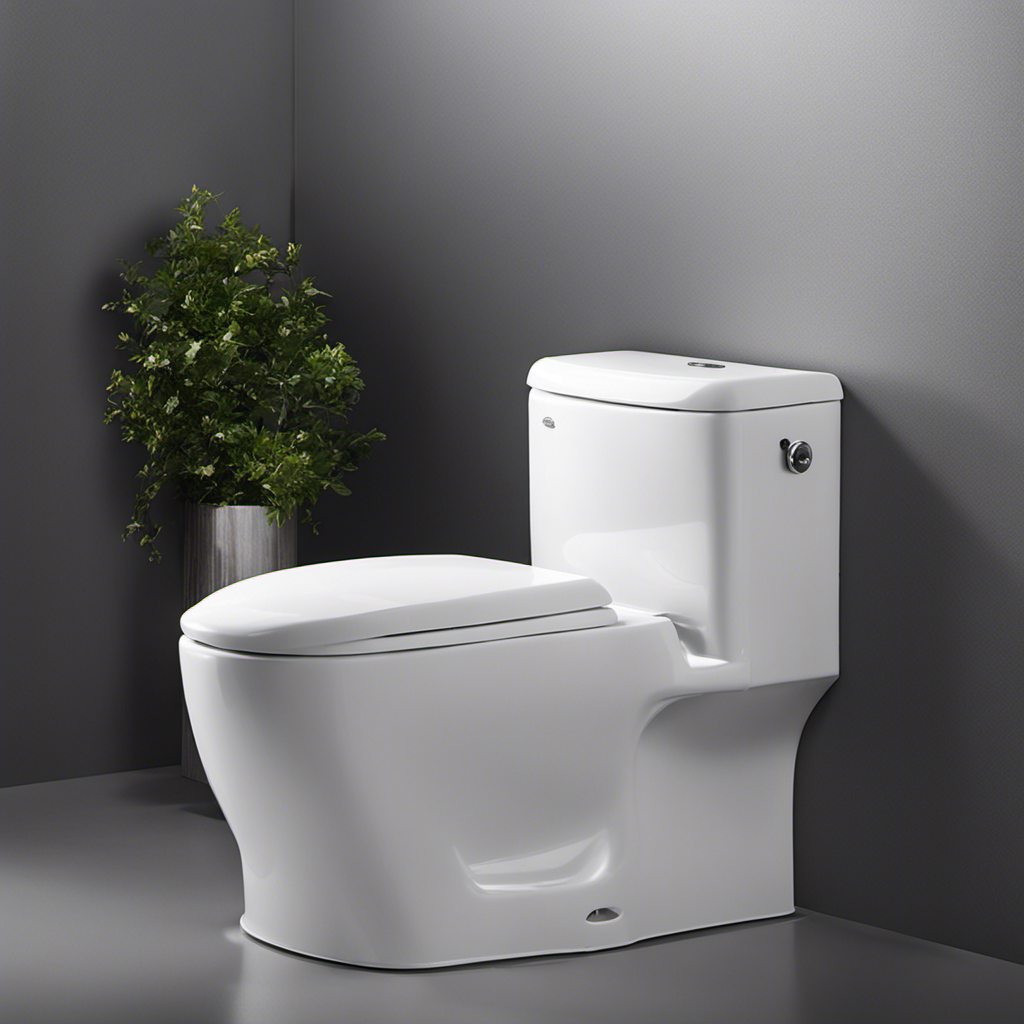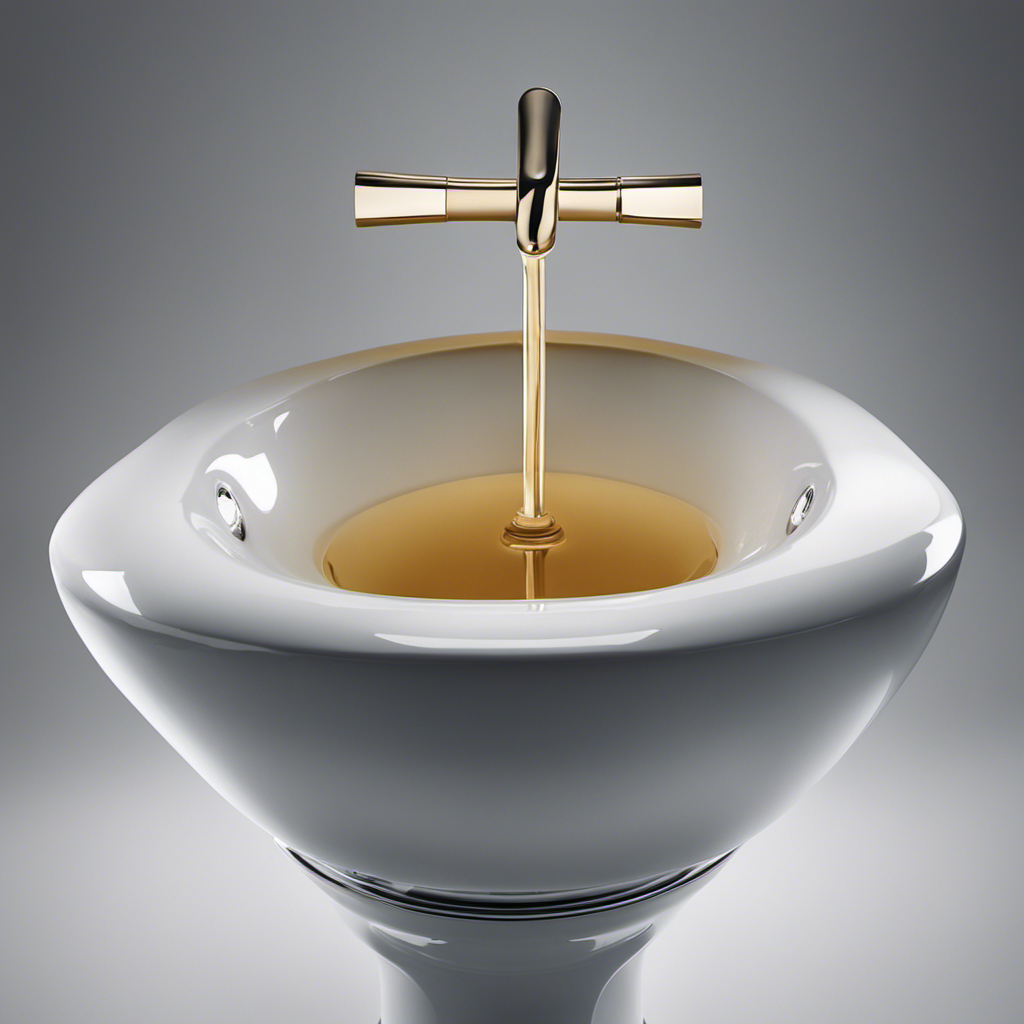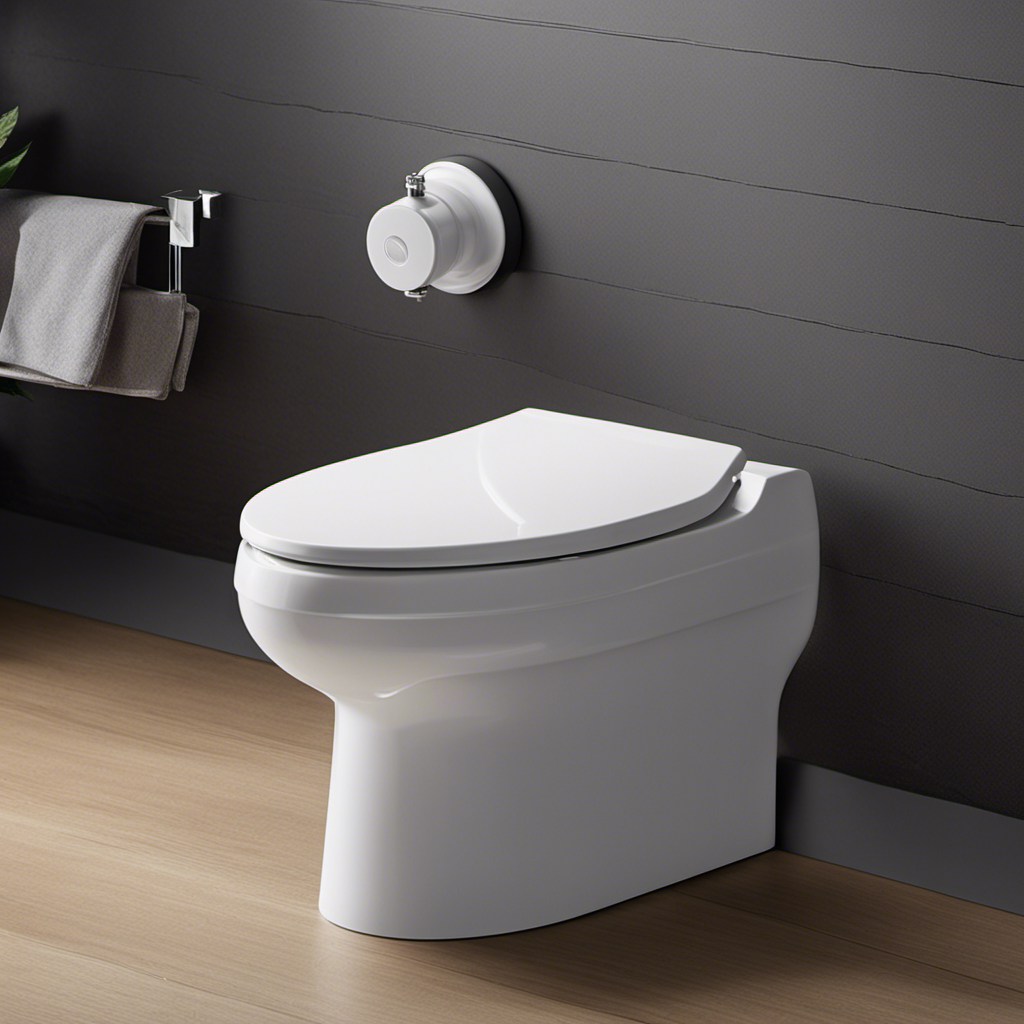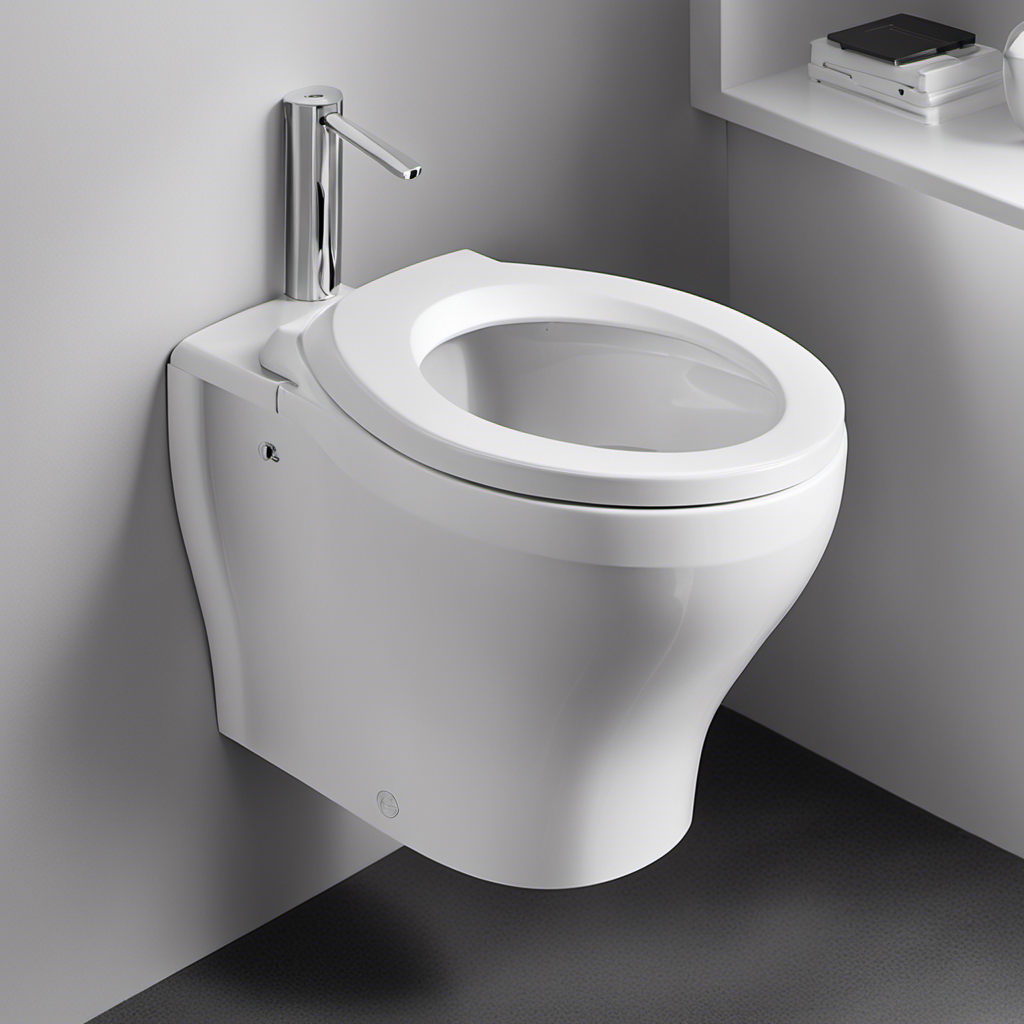Ever wondered why your toilet whistles like a teapot? Well, I’ve got the answers you’re looking for.
In this article, I’ll dive into the common causes of toilet whistling and explain the technical details behind it. From water pressure issues to faulty fill valves, we’ll explore all the possible culprits.
Plus, I’ll guide you through the process of identifying and fixing ventilation problems to finally put an end to that annoying whistle.
So, let’s get to the bottom of this noisy mystery!
Key Takeaways
- Faulty fill valve and worn-out or improperly sealing flapper are common causes of toilet whistling.
- Water pressure issues, such as reduced water pressure or water hammer, can contribute to toilet whistling.
- Ventilation problems, including blockages in bathroom exhaust fans or dirty ventilation ducts, can cause whistling toilets.
- To quiet a whistling toilet, check water pressure, clean the fill valve, adjust its height, and consider upgrading to a water-saving toilet.
Common Causes of Toilet Whistling
If your toilet is whistling, it could be due to common causes such as a faulty fill valve or a loose washer. One possible culprit is the toilet flapper. This rubber component is responsible for controlling the flow of water from the tank to the bowl. If the flapper is worn out or not sealing properly, it can cause the water to flow in a turbulent manner, resulting in a whistling sound.
Another potential cause is water hammer. This occurs when the water flow is suddenly stopped or redirected, causing a pressure surge. The resulting vibrations can create a whistling noise in the pipes. Understanding these common causes can help you diagnose and fix the issue.
Now, let’s explore the next section to understand water pressure issues in more detail.
Understanding Water Pressure Issues
To understand water pressure issues, you can check the main water supply valve and ensure it is fully open. If the valve is partially closed, it can result in reduced water pressure throughout your home, leading to a variety of problems.
High water bills are often a sign of water pressure issues, as the reduced pressure can cause fixtures like toilets to run longer and use more water than necessary. To conserve water and reduce your bills, it’s important to address water pressure problems. One effective technique is to install a pressure reducing valve, which regulates the water pressure coming into your home. This can prevent excessive pressure and save water.
Now, let’s move on to the next section where we will discuss the role of a faulty fill valve and its connection to whistling toilets.
Faulty Fill Valve and Whistling Toilets
The faulty fill valve in your toilet can cause a whistling sound. This is often due to a water pressure issue called water hammer. When the fill valve is not working properly, it can create a rapid change in water flow, causing a vibration and resulting in a high-pitched whistling noise.
To understand the potential causes of a faulty fill valve and whistling toilets, consider the following:
-
Water hammer: This occurs when the water flow is abruptly stopped or redirected, causing a shock wave that travels through the pipes and creates a whistling sound.
-
Toilet flapper: A malfunctioning toilet flapper can lead to inconsistent water flow, causing the fill valve to work harder and produce the whistling noise.
-
Limescale buildup: Mineral deposits can accumulate in the fill valve, impeding its proper functioning and causing the whistling sound.
-
Worn-out parts: Over time, the fill valve components can wear out, leading to leaks and vibrations that result in the whistling noise.
Identifying and Fixing Ventilation Problems
To identify and fix ventilation problems, check for any blockages or obstructions in your bathroom exhaust fan. The exhaust fan plays a crucial role in maintaining good air quality and preventing mold and mildew growth in the bathroom.
Start by turning off the fan and removing the cover. Use a flashlight to inspect the fan blades for any dust buildup or debris that may be blocking the airflow. If you notice any blockages, clean the fan blades and the surrounding area using a soft brush or a vacuum cleaner.
Additionally, ensure that the ventilation ducts are clean and free from any obstructions. If cleaning doesn’t solve the issue, you may need to troubleshoot the exhaust fan motor or consider replacing the fan altogether.
Regular ventilation duct cleaning and proper maintenance of your bathroom exhaust fan will help ensure optimal performance and air circulation in your bathroom.
How to Quiet a Whistling Toilet
If you’re experiencing a whistling sound when you flush, adjusting the water pressure may help resolve the issue. Here are four steps you can take to quiet a whistling toilet:
-
Check the water pressure: High water pressure can cause the toilet to whistle. Use a pressure gauge to measure the water pressure in your plumbing system. If it exceeds 80 psi, consider installing a pressure-reducing valve to regulate the flow.
-
Clean the fill valve: Sediment and debris can accumulate in the fill valve, causing it to vibrate and create a whistling noise. Shut off the water supply, remove the fill valve cap, and clean any debris using a vinegar solution or a descaling agent.
-
Adjust the fill valve height: If the water level is too high, it can create turbulence and lead to a whistling sound. Adjust the fill valve height by turning the adjustment screw or adjusting the float arm.
-
Consider upgrading to a water-saving toilet: Older toilets may have outdated mechanisms that can cause whistling. Upgrading to a water-saving toilet can provide better flushing performance and reduce the chances of whistling.
By following these steps, you can resolve the whistling sound in your toilet and enjoy a quieter bathroom experience.
Frequently Asked Questions
How Often Should I Clean My Toilet to Prevent Whistling Noises?
I clean my toilet regularly to prevent whistling noises. The frequency depends on usage, but a general guideline is once a week. Common causes of toilet whistling include a faulty fill valve or a partially clogged water supply line.
Can a Blocked Sewer Line Cause a Whistling Toilet?
Yes, a blocked sewer line can cause a toilet to whistle. When the sewer line is blocked, it can create pressure buildup, leading to unusual noises like whistling in the toilet.
Is It Possible for a Faulty Flapper Valve to Cause a Whistling Sound?
I’ve discovered that a faulty flapper valve can indeed cause a whistling sound in a toilet. If you’re experiencing this issue, it may be time for a flapper valve replacement. It’s one of the common toilet noises to look out for.
Can a Loose Water Supply Line Cause My Toilet to Whistle?
Yes, a loose water supply line can cause my toilet to whistle. It disrupts the water pressure, creating vibrations and resulting in the whistling sound. Regular plumbing maintenance can help prevent this issue.
Are There Any Temporary Fixes to Quiet a Whistling Toilet Before Repairing the Underlying Issue?
There are temporary fixes to quiet a whistling toilet, such as adjusting the water pressure or replacing a faulty fill valve. However, it is important to understand the toilet whistle causes for proper troubleshooting.
Conclusion
In conclusion, a whistling toilet can be caused by various factors. These include water pressure issues, faulty fill valves, and ventilation problems. It is important to identify the specific cause in order to effectively fix the issue and prevent further damage.
For example, I once encountered a case where a whistling toilet was due to a clogged vent pipe. By removing the blockage and ensuring proper ventilation, the whistling noise was eliminated.
Remember to consult a professional if you are unsure about how to address the problem yourself.










